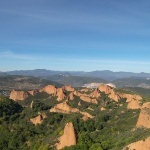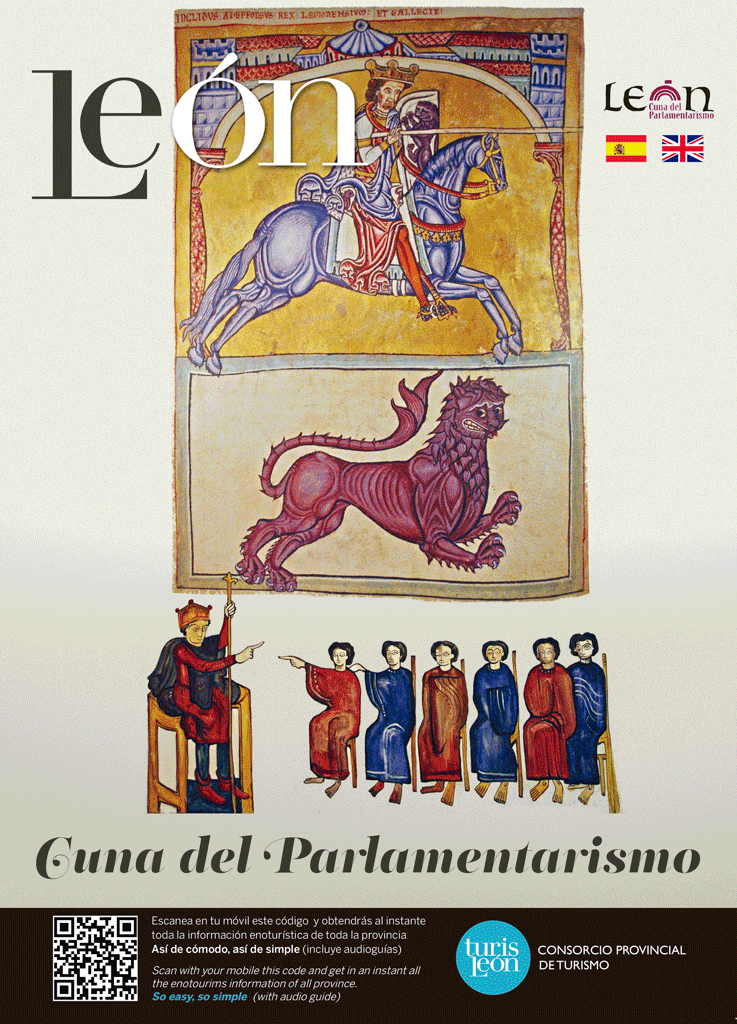LAS MÉDULAS
Location: Southwest of El Bierzo, in the townships of Borrenes and Carucedo.
Protection: Natural Space and declaration of World Heritage of Humanity by the UNESCO in 1997.
LANDSCAPE
The human intervention brought about a contrast between the surroundings and the deep red remains of what in the past were the depths of mountains. Las Médulas are the outcome of gold mining activities during the Roman period. It was carried out via the “ruina montium” system (Latin for “mountain ruin”). From these mining uses we can nowadays find remnants of canals, washing sites, sewers…
Actually, this area had already been exploited by the Astur tribes (a Celtic group settled in the Asturias-León area) before the Romans arrived. It was, however, during the Roman period that it reached its apogee. The activities were abandoned in the 3rd century A.D.
It was considered the World Heritage of Humanity for several reasons: it was the largest open-pit mine in the whole Roman Empire and the best example of the great changes that gold exploitation caused in the peoples inhabiting the Northwest of the Peninsula. Since then, it conditioned later uses.
The big landslides shaped the artificial plains that since then have been the way to access the area. The Carucedo Lake was formed when the mining debris clogged a valley. It is currently a protected wetland. Also, the canals became trails. The land modification led to changes in its utilization: harvests brought by the Romans are still active. Some cases, such as the chestnut tree, have become a hallmark.
FLORA
The location of Las Médulas, in El Bierzo depression (characterized by the Mediterranean climate with Atlantic influence) allows for a great variety of plants and trees: brooms, gorse, thickets, briars, riverside woodlands (willow, poplar…), holm oaks, beeches and even cork oak. There also fruit trees near the towns from the area, but the most characteristic tree is the chestnut tree.
FAUNA
The commonest species are the wild boar, roe deer and wild cat. There also rabbits, hares, genets, dormice, badgers, goshawks, wood pigeons, several reptile species… The riverside woodlands feature insectivorous birds
WHAT TO DO AND SEE
There are several means available to understand the landscape of Las Médulas:
- The archaeology center, at the entrance of the village of Las Médulas. Here we can obtain all the necessary information for understanding this natural space: maps, mock-ups, graphic recreations, a documentary about the archeological area… There are all the necessary items to go through the territory.
- Itineraries: there are several itineraries, some of them with information points on the ground, such as the mine, the two pre-Roman settlements (Castro de Borrenes and Castrelín de San Juan de Pazuelas) and one of the Roman settlements (the metallurgical village of Orellán).
- Brochures and publications such as the Guía arqueológica (Archaeological guide), printed by the Junta de Castilla y León (Castile and León’s government).
- We can also obtain information abou the area and the itineraries at the Visitors Reception Center (Centro de Recepción de Visitantes), at the town of Las Médulas and at the Canals Interpretation Center (Centro de Interpretación de los Canales) named after journalist Luis del Olmo, in the town of Puente de Domingo Flórez.
TO KNOW MORE
IMAGES




